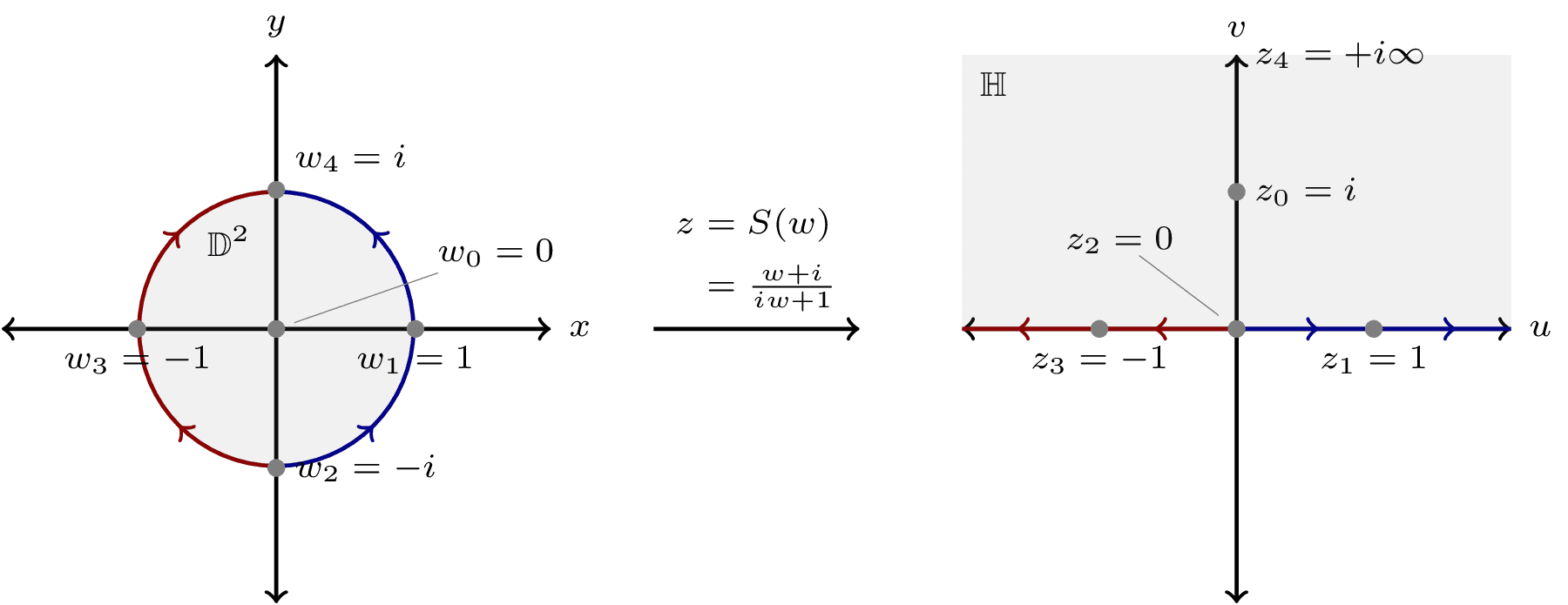Disk to Plane
Visualization of the Cayley transform S(w) = (w+i)/(iw+1) mapping the unit disk (D²) to the upper half-plane (H). The diagram shows how points and paths are mapped between these domains, with special points labeled. This conformal transformation is useful in string theory and conformal field theory, where calculations are often simpler in one domain than the other.

Download
Code
disk-to-plane.typ (150 lines)
disk-to-plane.tex (71 lines)